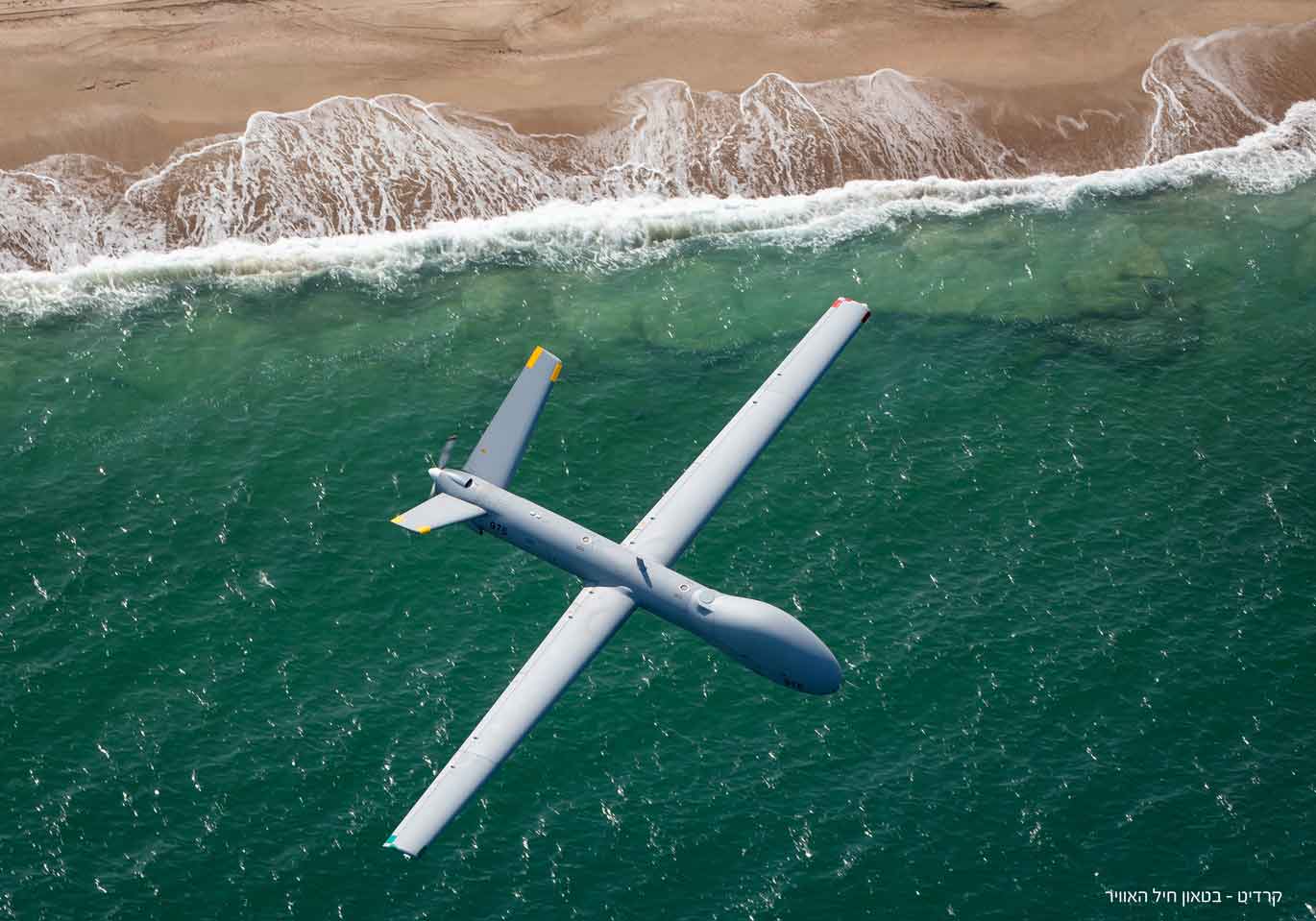Why the Hermes 900 is one of Elbit Systems most popular MALE UAVs
The lifting of a gagging order recently revealed that armed UAVs like Elbit Systems' Hermes-900 have been extensively used in operations against Hamas in Gaza.
By Arie Egozi
09 March 2023

Elbit Systems recently announced its 120th order for the Hermes 900 Medium-Range Long-Altitude (MALE) unmanned aerial vehicle (UAV). The Hermes 900 multi-role MALE UAV is Elbit Systems' largest unmanned aerial vehicle and can perform a wide range of missions including persistent intelligence, surveillance, target acquisition and reconnaissance (ISTAR).
The advanced UAV has an endurance of up to 30 hours in a single sortie and features over-the-horizon, persistent multi-mission capabilities with a payload carrying capacity of 450 kgs and a maximum ceiling of 30,000 feet. It can perform ground support and maritime patrol missions and supports integrated multi-platform, multi-sensor operations, and as recently officially confirmed, it can also be used for attacks on ground targets.
Recently, a gag order was lifted after 20 years confirming that the Israeli Air Force (IAF) uses armed UAVs like the Hermes-900, which can carry a variety of weapon systems. The specifications of these systems are highly classified, but they have been developed by Israeli defence companies to achieve the highest level of performance when launched from unmanned aerial systems.
The gag order was lifted by the Israeli government due to pressure from defence companies that wanted to take advantage of the growing international interest in armed UAVs followng their use in the war in Ukraine.
According to Israeli sources, some countries have requested demonstrations of the Israeli armed UAVs. The change in policy may affect the plan of the German Air Force to arm its leased IAI Heron-TP UAVs with missiles. Plans to arm the leased long-endurance UAVs provoked much debate in German political circles, but now, according to Israeli sources, it appears to be moving forward.
The IAF first purchased an armed UAV in 1990. This was the Elbit systems Hermes-450 dubbed "Zik,” which means spark. It was used extensively in Gaza to perform pinpoint attacks on terror targets, as well as in Lebanon against Hezbollah. Demand for armed UAVs grew from there as they proved their efficiency and the IAF acquired other types — the Hermes-900 and the Heron TP, which is made by Israel Aerospace Industries (IAI).
The Hermes-900 (Kochav), which means star in Hebrew, entered service with the IAF in 2012, and two years later was used in the Protective Edge operation against Hamas in Gaza. Israeli defence companies, namely Rafael and IAI, developed special weapon systems for the IAI's armed UAVs.
According to Israeli sources, the IAF has developed a doctrine of using its armed UAVs in different scenarios. This includes using formations and different missiles. The UAVs are equipped with very advanced payloads that help detect the targets "under severe" conditions.
The Hermes-900 can carry a variety of payloads according to the mission. Among them are multi-spectral electro-optical (EO) payloads such as SPECTRO XR, the Wescam MX15/20, SkEye wide-area aerial persistent video surveillance (WAPS), MIST G airborne imaging system and laser designator/marker.
The SPECTRO XR is carried under the UAV’s nose and can be used for targeting, fire control, and surveillance. SkEye WAPS, which is installed on the belly, is used for surveillance, observation, and intelligence gathering. The in-built imaging sensors allow wide-area persistent surveillance day and night while simultaneously capturing real-time imagery and video.
According to Elbit Systems, the significant number of Hermes-900 UAVs ordered and delivered to customers attests to its competitive edge, which combines technological sophistication, reliability, open architecture, and advanced visual, signal and radar intelligence.
In addition to the Israeli Air Force, other customers of the UAV include Azerbaijan, Canada, Brazil, Chile, Colombia, Iceland, the EU, Mexico, the Philippines, Switzerland, and Thailand. The success of the Hermes-900 inspired Elbit to develop the Starliner UAV, a derivative of the Hermes 900, which is equipped with advanced civil aviation technology allowing it to meet both military and civilian certification standards.
On-board technologies include a terrain avoidance warning system; automatic take-off and landing in limited visibility; redundant avionics, sensors and satellite data links; direct lightning strike sustainment, flight in denied/jammed GPS environments, automatic air traffic sense and avoid systems; and last resort parachute to avoid injuries.
The Starliner UAV is believed to be the only NATO Class III UAV with these certifications.